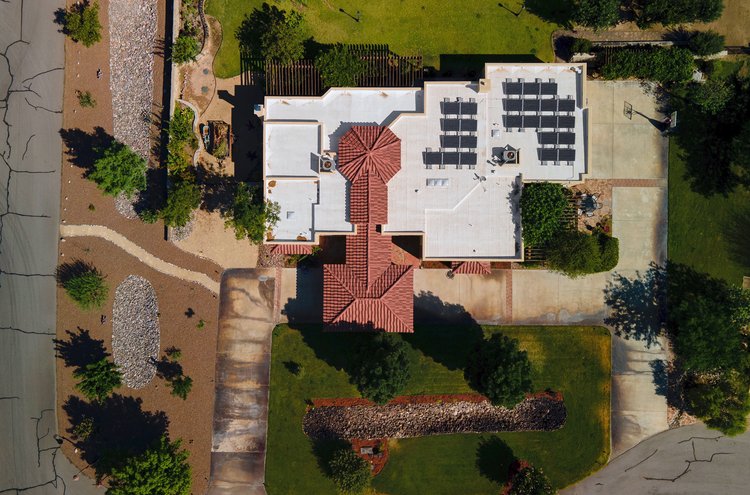Pictures of your finished solar project should be beautiful. In the past, this meant hiring expensive photo editors or photographers. But now with readily available equipment and quick editing techniques, anyone can create stunning imagery.
Dave Levine knows this well. He is the Director of Commercial Operations at Scanifly, and is also a hobbyist photographer with a passion for the outdoors, nature, and environmental sustainability. Previously, he was a project manager for Organ Mountain Solar & Electric and Positive Energy, both solar contractors in New Mexico. He also runs @BadAssSolarJobs, which is a social media account to promote and share awesome solar drone imagery.
Below Dave shares his best practices for capturing – and easily editing – amazing photos with drones.
How did you get into photography? When did drones come in?
I’ve always had an interest in photography. What really transformed my skill set was my University of Colorado at Boulder course Flow Visualization, which taught me how to think artistically about technical subjects. I’ve also always been an avid hiker and it’s hard not to incorporate photography when exploring the Mountain West.
Along the way, I developed a passion for renewable energy and solar. I realized there was an opportunity, similar to flow visualization, in taking a technical subject and making it become a piece of art. I have a gallery of some examples on my website davelevinephotography.com. This is crucial for expanding and engaging the audience on the topic of renewable energy, which is an important topic for me personally, but also aligns well for strategic marketing purposes.
Drones came into the picture in early 2018 when I bought one for photography. I soon realized the opportunity to blend my hobby and my profession. Not only could I take pride in the solar projects I was managing, but I could now capture and share the solar projects in an entirely new and exciting perspective!
How to make a marketing image stand out?
I always tell people to think about it like art. In tangible terms, that means the following things:
1. Think about intention: While the subject of your photo is solar, it’s important to understand how you will frame this photo. Or in other words, what will be your composition? Will it be just the solar arrays? Will it be inclusive of the solar arrays and the building? What about the street? Will it be nadir or angled? There are a lot of options and there is no right answer; however, to develop your framing, you’ll need to consider a few other important factors.
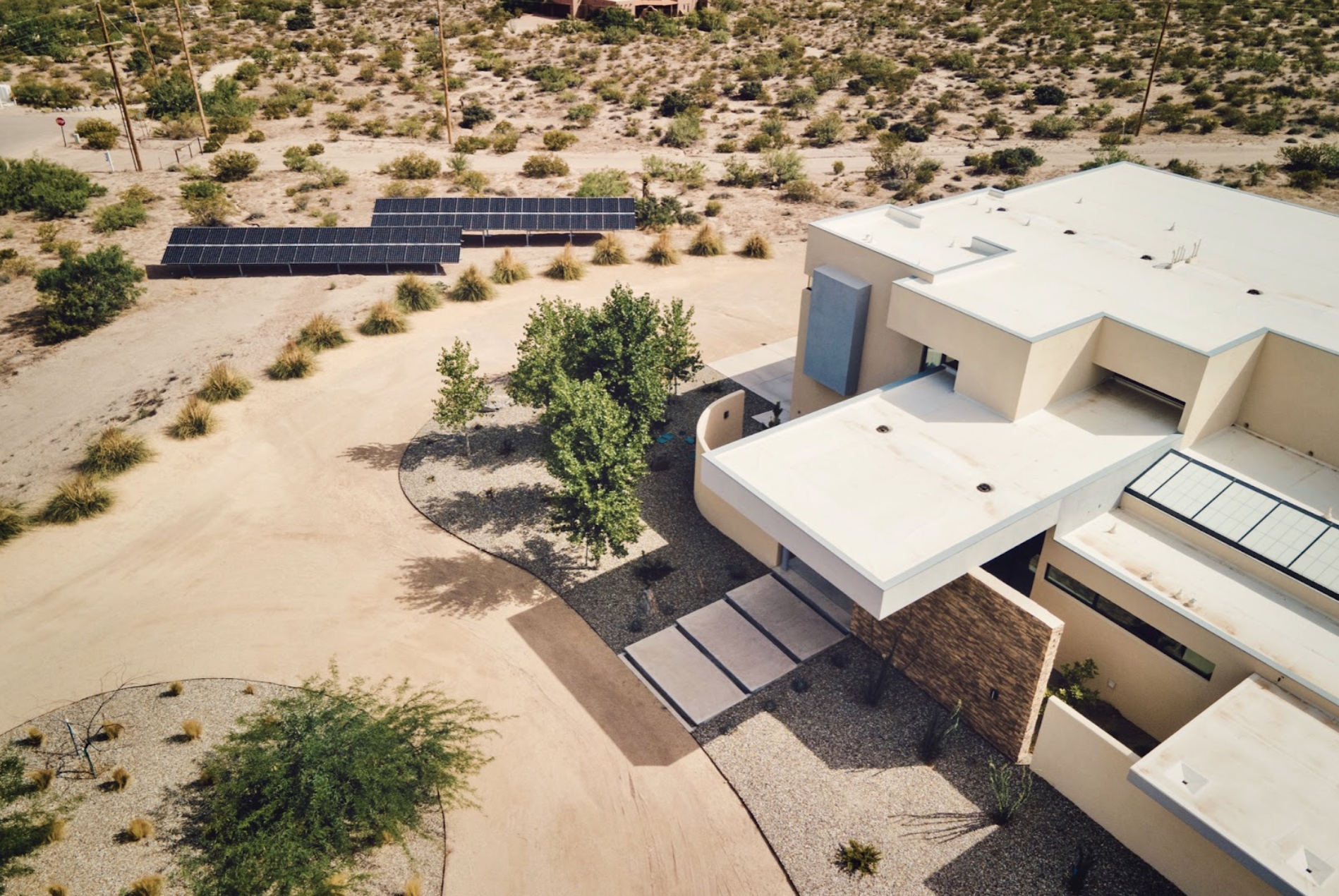
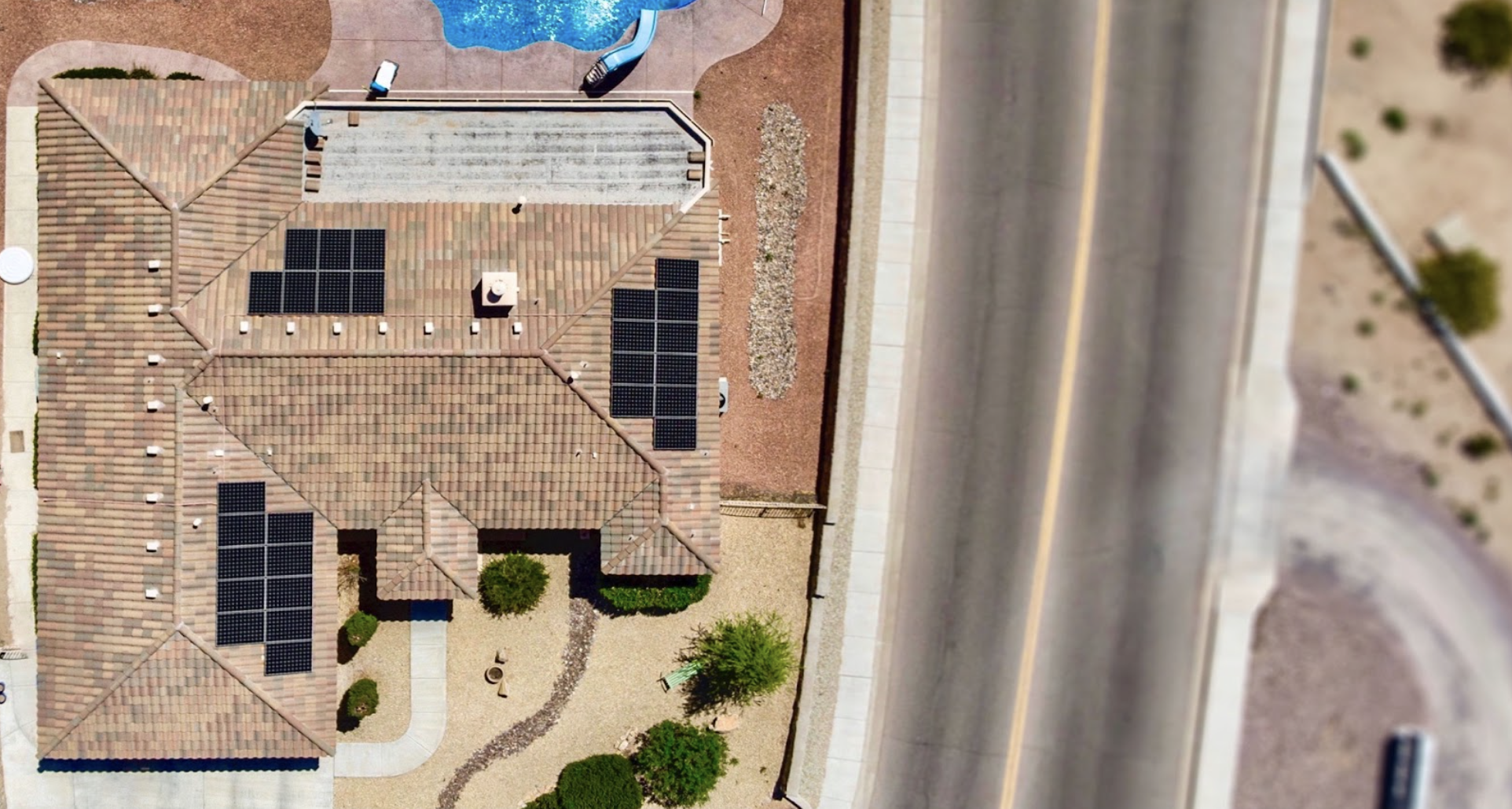
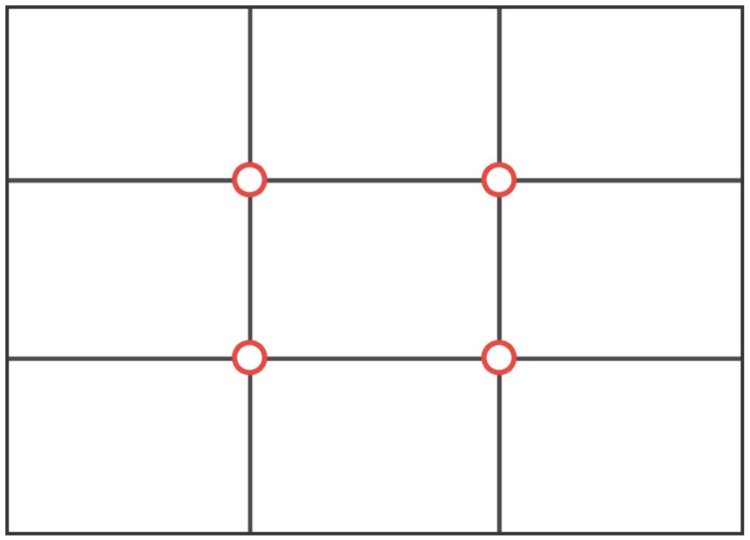
2. Use the rule of thirds: It’s best to avoid placing the subject in the center. Instead, use the rule of thirds to create more engaging content. While placing the subject off-center might sound counterintuitive, it draws the eye of the viewer in a more powerful manner, and is a best practice common among photographers.
3. Leverage geometric shapes: When framing a shot, it can sometimes be visually overwhelming. If you find this to be the case, I highly recommend breaking the image down to basic geometries to better identify the major components of your photo.
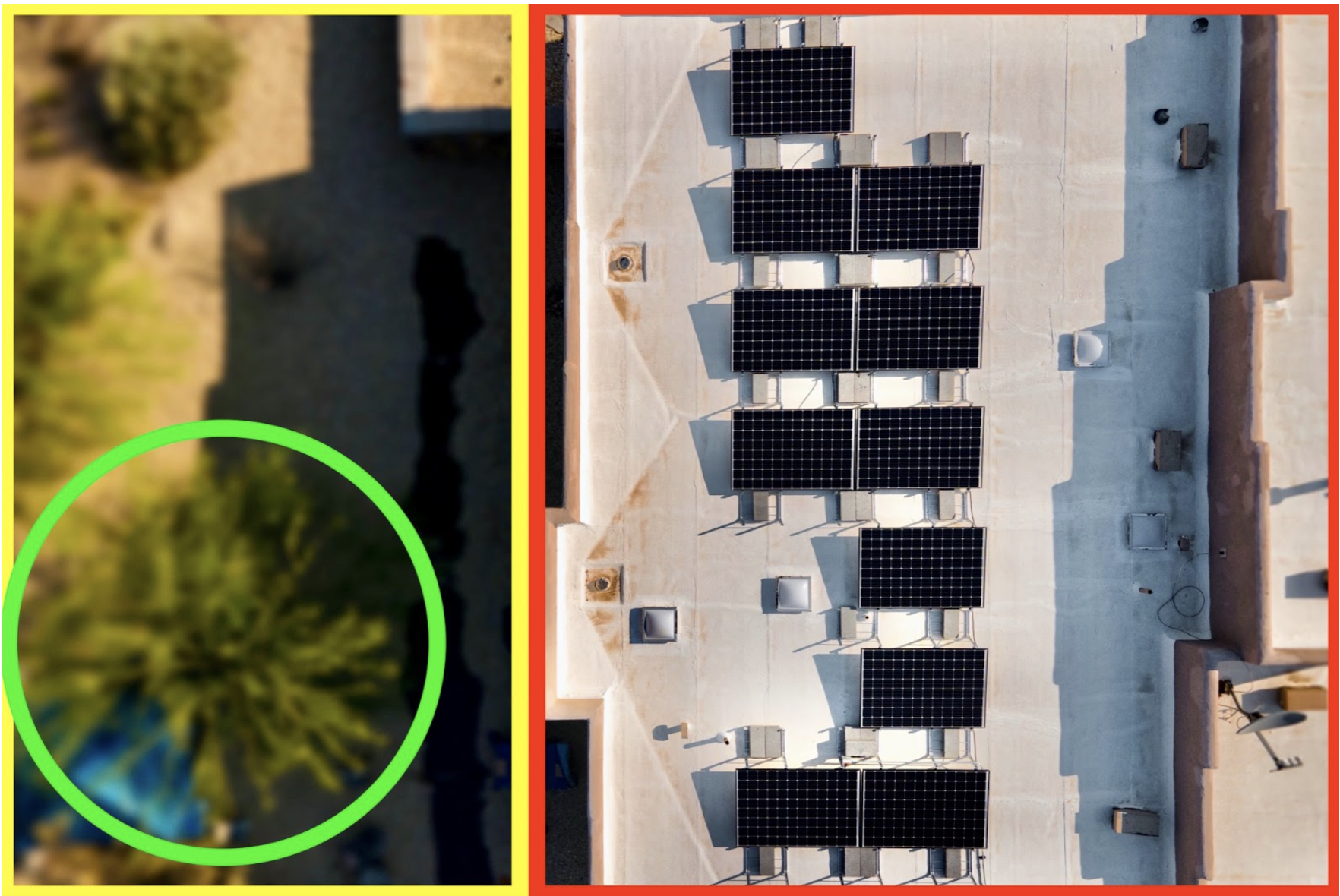
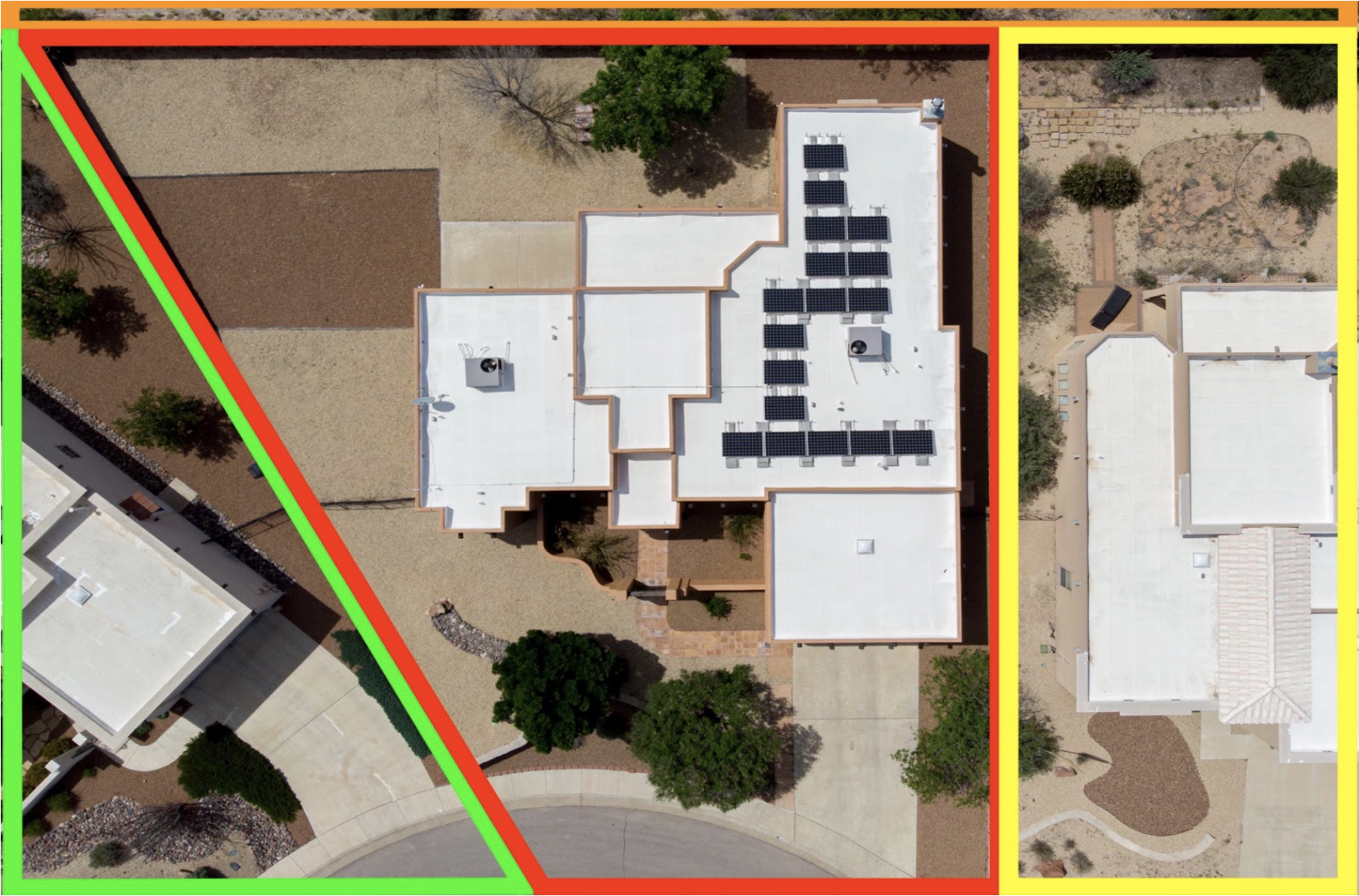
4. Focus on alignment: Make sure you square-off your images (pick a reference line, such as a ridge, a parapet wall, or a solar array, etc.) to set your overall alignment. Different reference lines can yield different feels for the photo so be sure to experiment, either by taking multiple photos while flying or during the post-processing stage.
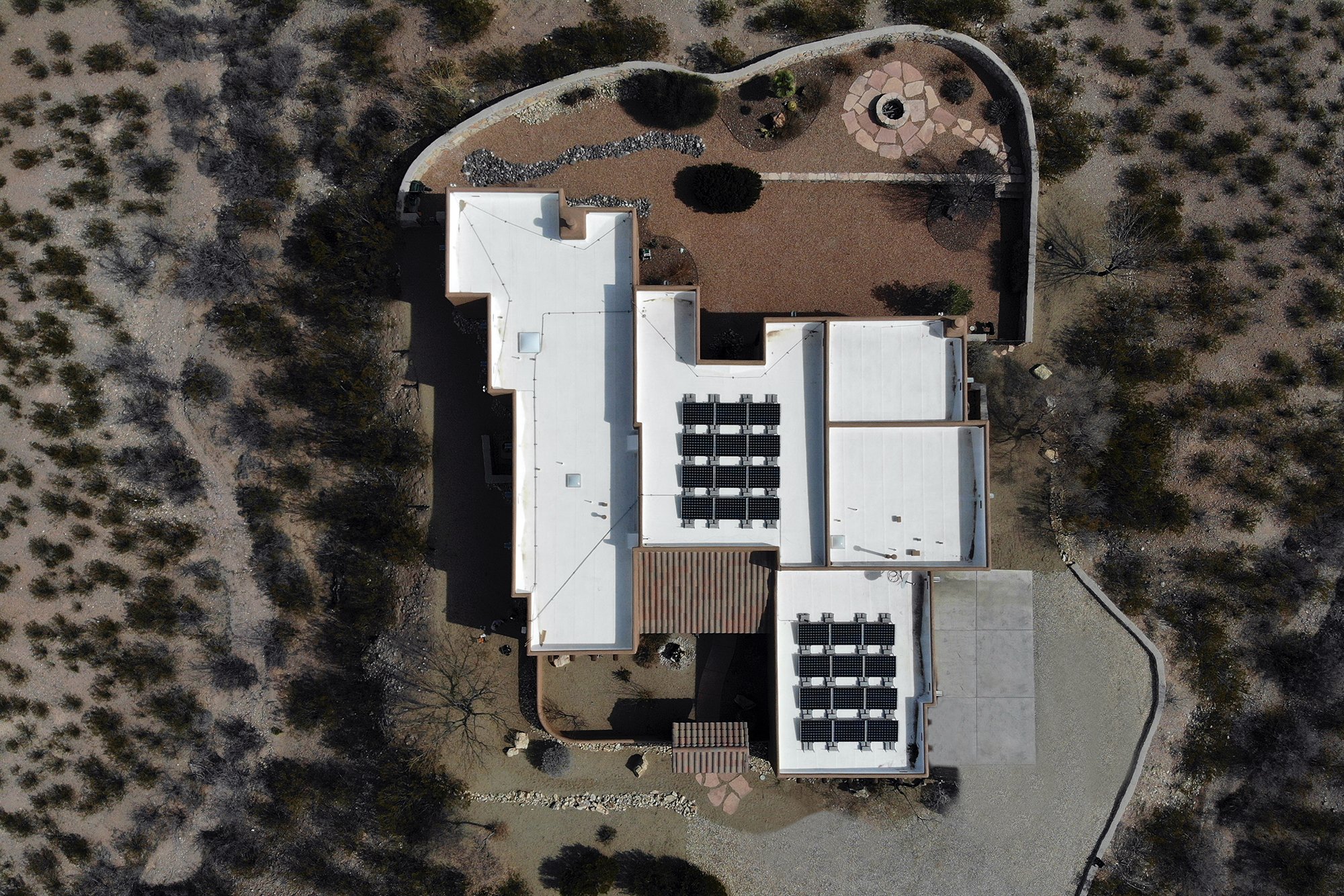
5. RAW format vs JPEG: RAW images are an uncompressed image format that gives the user more control of editing the photo after-the-fact. JPEG images are a compressed image format that works well, but limits the power of post-processing edits. With mobile photography’s ever-increasing power and ability, RAW images are becoming more common and thus mobile devices and apps are now able to manage them. To get the most “pop” out of your images, I highly recommend RAW images vs JPEG images.
6. Post-Processing Edits: For all the suggestions above, don’t feel like you have to nail it just right when flying the drone. If you frame the shot to give yourself some wiggle room, you can crop and rotate to achieve the same output. The following are the basic edits I always recommend reviewing:
-
Crop & Rotate
-
Exposure
-
Highlights/Shadows
-
Hue/Saturation/Lightness (HSL)
-
Temperature (Warmth)
-
Bokeh Effect
-
Vignette
7. Remove the blue hues from solar panels: Many solar panels have a blue reflection when photographed. If you have some more advanced editing skills, I always recommend removing this blue hue. It yields deeper blacks within the solar modules, richer whites, enhanced contrast for the overall image, and ultimately delivers a better looking image.
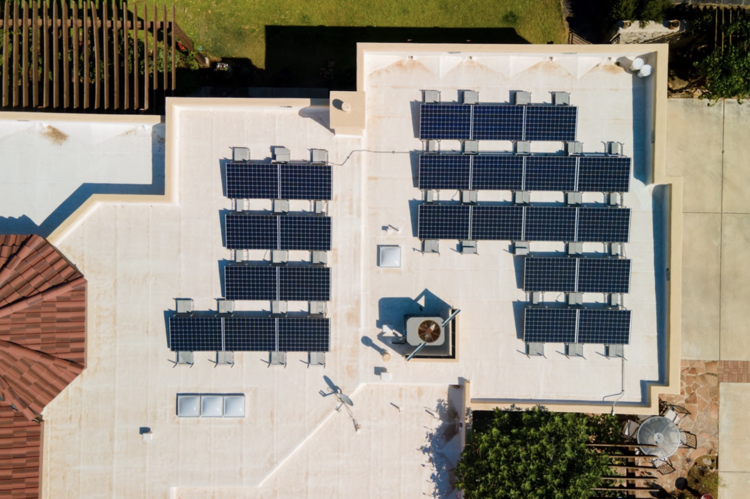
Original
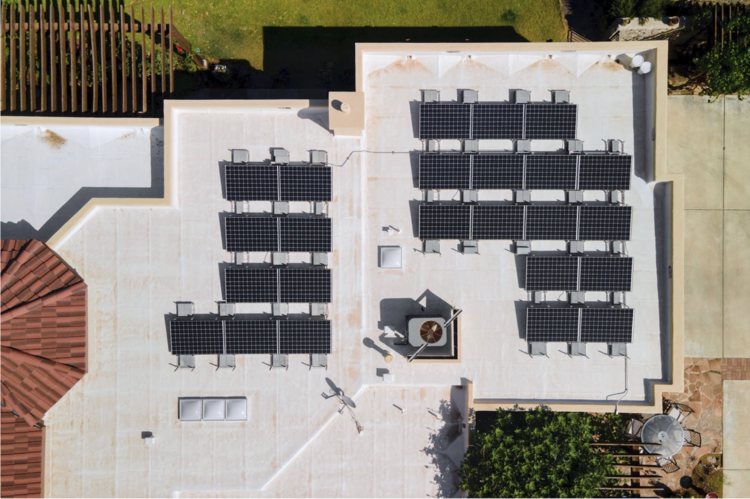
Post Edit
8. Use the right tools:
-
Free Mobile Apps: Adobe Photoshop Express, Adobe Lightroom, Snapseed, Photoleap
-
Desktop Apps: Adobe Photography Pack ($10 per month), Luminar ($47), and Affinity Photo ($55) are three great tools that are easy to learn and inexpensive.
Why should solar contractors add drones to their portfolio for marketing images?
Simply put, drones are a superior camera for capturing solar imagery because they are:
More flexible: No need to hop on a ladder or run around in the hot sun (or frigid cold) to get the shot. You also don’t need to fly a drone high up to get a great shot – it can hover a few feet off the ground to hit a nice angle.
More capable of taking difficult pictures: With a drone you can more easily capture hard-to-reach areas, get close-up photos of panels, work from weird angles, and more because drones can easily access hard to reach places.
More comprehensive when capturing site context: Capture the array, electrical equipment, and even the scenery! This is almost an impossible feat without a drone.
Better for photo quantity: Not every photo will be a winner. Drones can take dozens (or even hundreds) of photos so you can pick the best one.
The best option for vertical height: Getting 50+ feet in the air on a residential lot is impossible without a drone.
What benefits do solar contractors get from great marketing images?
Solar contractors get direct, indirect, and team benefits from great marketing images.
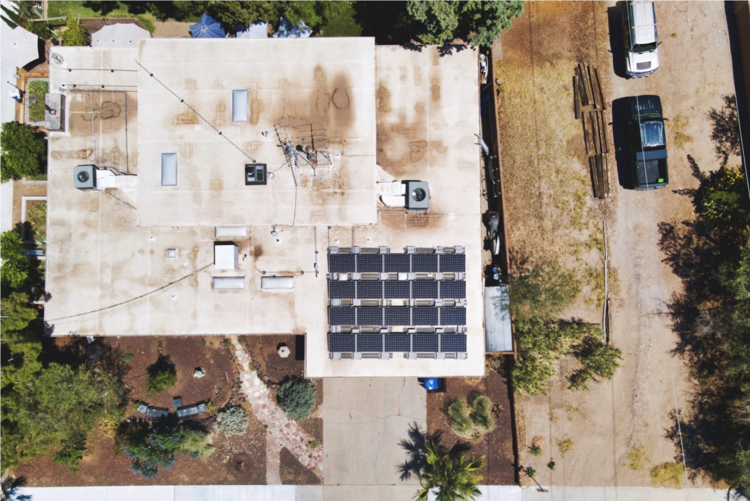
Direct: High quality images make people want to work with you more often. This drives lead generation. But there’s also a brand awareness element, since you can put your logo on your marketing images. Every time the images are shared online, someone your business’ name.
Indirect: When you have beautiful marketing images with solar panels, streetscapes, or other natural beauty, people get used to solar being part of life. This makes it feel normal to have solar panels, which is a massive intangible benefit given that solar is still relatively new.
Team: From a company perspective, great imagery is a point of pride. Your team works hard to deliver high-quality solar installations, and capturing that as a lasting image is a great way for the team to stay excited about their work. Even better, print the imagery as wall decor for the office and let the team enjoy their work every day!
Efficiency, cost effectiveness and beauty in one package
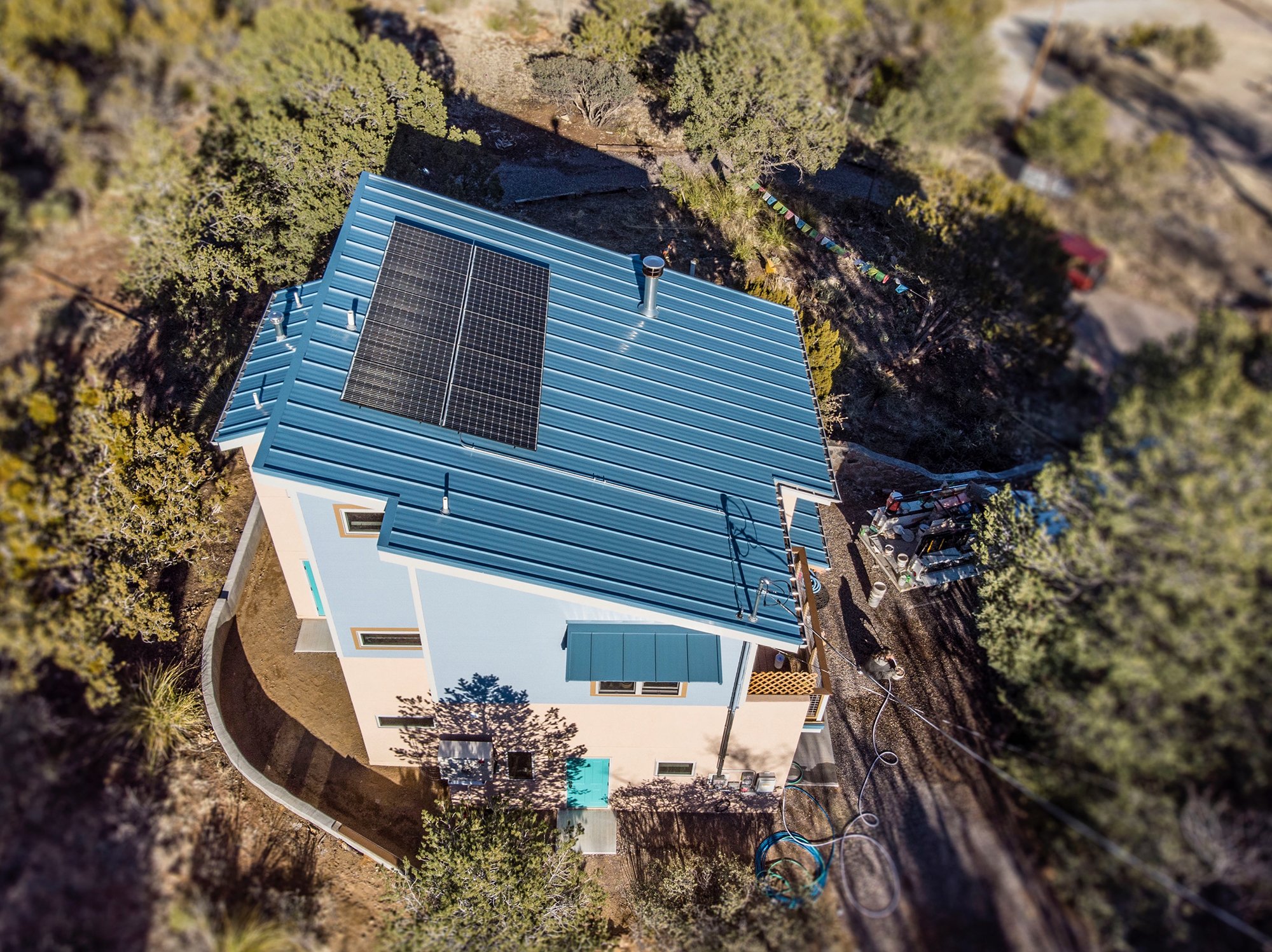
If you’re already using drones for solar surveying, you can likely get your surveyors to take extra photos for marketing purposes using point of interest (POI) flight modes. From there, anyone can learn the basics of photo editing technology to make the images pop.
Marketing is more critical than ever as solar becomes more mainstream and more competitive. But in an increasingly rushed world where people don’t have hours to spend taking close up pictures, a drone can speed up the process to ensure you get the wonderful images you need in a fraction of the time and cost.
If you have an awesome solar drone image and would like to share, please use #BadAssSolarJobs and tag @BadAssSolarJobs on Instagram, Twitter and/or Facebook.
Images courtesy of Dave Levine, https://www.davelevinephotography.com/

